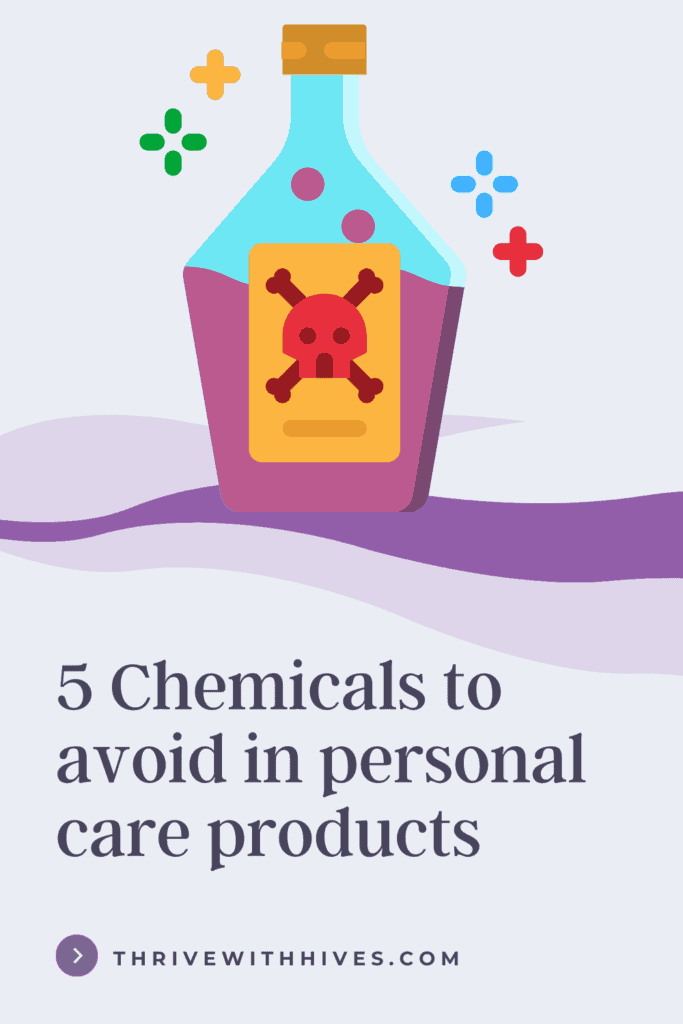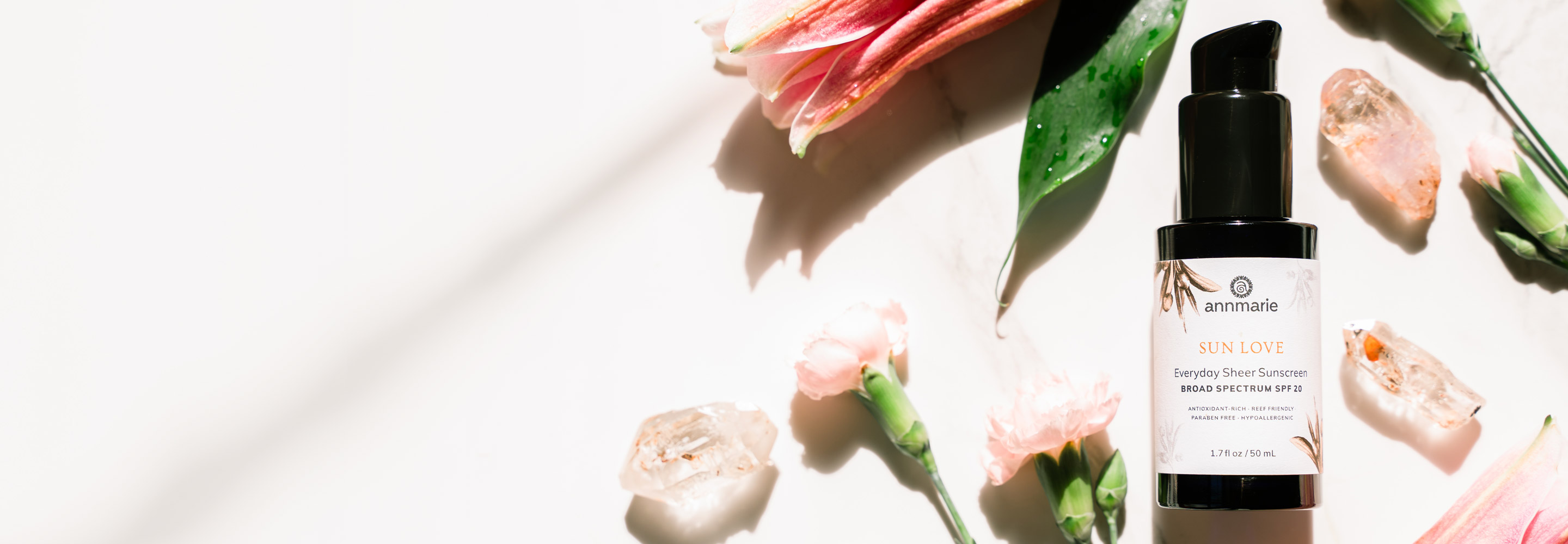Chemicals to avoid in personal care products
We have all heard the question, “have you tried changing your detergent, soap, etc.…” and although we know that these things are not the cause of our hives, we may benefit from switching to less toxic alternatives.
Many of us are sensitive to things that we didn’t seem to react to before becoming afflicted with this disease. For example, I can no longer use anything with artificial “fragrance” without having a reaction. When I was a teen and young adult I practically bathed in fragrances. Avoiding these has not made me hive-free, however, I definitely notice a difference when using products without these ingredients.
Chemicals in our care products do not cause our hives, but many of us are sensitive to many things that we didn’t seem to react to before becoming afflicted with this disease. These are commonly used chemicals to avoid in personal care products.
I may earn commission from products purchased through links on this site. I appreciate your support for this site and would never link to something that I would not personally use.

This is for entertainment and educational purposes only and is not meant to diagnose, treat, or cure any disease.
Personal care products and chemical regulations in the United states
When I first started my health journey, I had no idea what was in my products, nor did I think to question it. I felt safe knowing that the FDA regulates the chemicals that companies are allowed to use in our everyday products. But I was wrong.
It is an all too common assumption that we make here in the states. We assume that if it is allowed, it must have been proven safe. In fact, it is the opposite. A chemical may be used until and unless it is proven to be harmful. Even then, it takes years to have these chemicals banned.
When I first started looking at my personal care and household products, I was appalled at what I found. I had been bathing myself in these common chemicals that have been banned in other countries because they are considered unsafe.
We don’t often think about what we put on our skin until we have a skin issue, but this goes much deeper than that. Think about medications that we apply to the skin. If you use a nicotine patch, for example, it is absorbed through the skin, right? So why aren’t we more concerned about the other chemicals we apply to our skin?
Likely, you have never really considered it an issue.
The European Union has banned about 1328 chemicals that are known or suspected to cause cancer, genetic mutations, reproductive harm, or birth defects. The United States FDA has banned only 11.
How to Minimize Exposure to Toxins
The best way to reduce your exposure is by avoiding the substances or areas where they are present. Please educate yourself on your products and the chemicals they contain.
-Use natural cleaning products and avoid chemicals like solvents, which can be found in many cosmetic products such as soap, hair spray, and dry shampoo.
-Wear gloves to avoid the chemicals when cleaning or handling other toxins like herbicides, pesticides, and paint.
Familiarize yourself with these common chemicals to avoid in personal care products.
5 Common Chemicals to Avoid in Personal Care Products
Parabens
Commonly used preservatives for food items like candy bars – but also present in some beauty products such as lipstick, where it helps prevent the growth of bacteria.
Parabens have been linked with breast cancer, potentially disrupt hormones in the body, and can cause skin irritation.
Specifically, methylparaben can increase the risk of breast cancer, especially when combined with high levels of estrogen from other sources such as birth control pills or hormone replacement therapy.
Learn More about why parabens should be avoided HERE
Parabens (Benzylparaben, Methylparaben…) are commonly used preservatives for food items like candy bars – but also present in some beauty products such as lipstick where it helps prevent the growth of bacteria. They have been linked with breast cancer development when applied topically, so avoid using these if you want to protect yourself from this type of illness.
What to look for:
- methylparaben
- ethylparaben
- propylparaben
- isopropyparaben
- butylparaben
- isobutylparaben
2. Formaldehyde and Formaldehyde releasers
Formaldehyde is a chemical that’s found in many cosmetics products, including soap, hair spray, and shampoo. If you think of formaldehyde in your personal care products, you likely know that this is not a good chemical to place on your skin.
Manufacturers have caught on to this and now use formaldehyde releasers instead. These go by different names that you wouldn’t recognize. They are not formaldehyde, but as they decompose, they release formaldehyde. So they have essentially just changed the ingredient to put your mind at ease, but it does not lessen your exposure.
Formaldehyde releasers can have dangerous health effects even in low amounts of exposure. They can irritate the eyes, nose, and throat, create mucosal decongestion, create serious respiratory problems, and expose you to risk for cancer. Formaldehyde can cause skin irritation, commonly known as eczema. Eczema is characterized by skin drying, cracking, reddening, and even blistering in some cases.
Banned in Japan and Sweden, restricted in E.U. and Canada
What to look for :
- Diazolidinyl Urea
- Imidazolidinyl Urea
- Metheneamine
- DMDM-hydantoin
3. PEGs
PEG compounds are widely used as softeners, thickeners, moisturizers, and solvents. These petroleum-based compounds are found in many cosmetics and personal care products as well as in laxatives such as Miralax.
It is used to help with absorption, which includes both the good and bad.
PEG compounds show some evidence of genotoxicity and, if used on broken skin, can cause irritation and systemic toxicity, making them unsafe for use on damaged skin.
Carcinogenic contaminants are the primary concern, as PEGs have been shown to be contaminated with ethylene oxide and 1,4-dioxane. Ethylene oxide is a human carcinogen, and 1,4-dioxane is listed as a possible human carcinogen.
California Environmental Protection Agency has classified it as a developmental toxicant based on evidence that it may interfere with human development and may interfere with human development.
These harmful components can be removed, however; the consumer has no way of knowing if this was done. That’s why this is one of the chemicals to avoid in personal care products.
What to look for:
- Polyethylene glycol
- Ingredients that contain PEG (usually will have a number afterward like PEG-10)
ETHANOLAMINE COMPOUNDS
Ethanolamines are used in many personal care and household products to help make products more sudsy or creamy in texture.
Considered a carcinogen as well as a skin irritant, these are banned in the EU.
What to look for:
- Triethanolamine
- diethanolamine
- DEA
- TEA
- cocamide DEA
- cocamide MEA
- DEA-cetyl phosphate
- DEA oleth-3 phosphate
- lauramide DEA
- linoleamide MEA
- myristamide DEA
- oleamide DEA
- Stearamide MEA
- TEA-lauryl sulfate
PHTHALATES
Phthalates (E.g., DEP, DBP) can be found in most personal care products such as nail polish or lotion because they help make them spread better and last longer.
Phthalates are known to be endocrine disruptors and may affect reproductive health and development. Women who use skincare products containing phthalates are at increased risk of breast cancer. You can read more about phthalates and breast cancer here.
Phthalates may be hidden in the ingredients under “fragrance” as they are often used in fragrances to make the scent linger. When purchasing products that use fragrance, be sure it is Phthalate free.
What to look for:
- DINP (diisononylphthalate)
- DEHP (dichloro-ethyl phthalate)
- DnOP (di-isobutyl phthalate)
- DBP (Dibutyl phthalates)
This is, of course, just a brief overview of 5 of the toxins to avoid in personal care products. There are many more chemicals in our products that we need to question.
Here are some of my favorite non-toxic brands:
- AnnMarie Skincare– Personal care products, limited selection of makeup
- Araza Natural Beauty– Makeup
- Lola Tampons
You can also check the EWG.org website for more information on safe household and personal care products. You can use the search feature to learn about products you already have in your home and make an educated decision on whether to continue using them.
Like anything, there is no one size fits all solution. You may be perfectly content to use the products with these chemicals, and that is your choice. There is much debate on the safety of these chemicals and if using them in small amounts is harmful or not.
I personally choose to try to limit my exposure as much as possible. Have you checked your products on EWG.org? Were you surprised at what you found?

